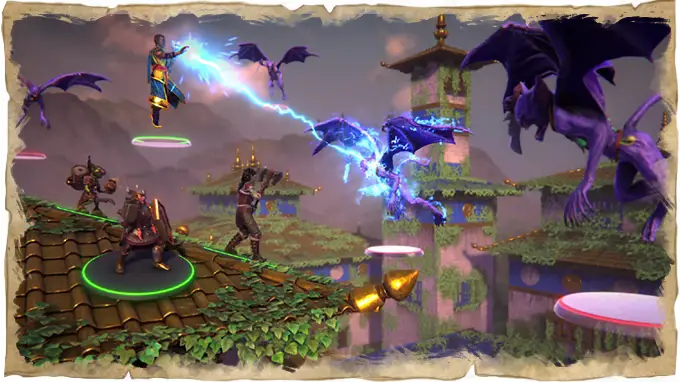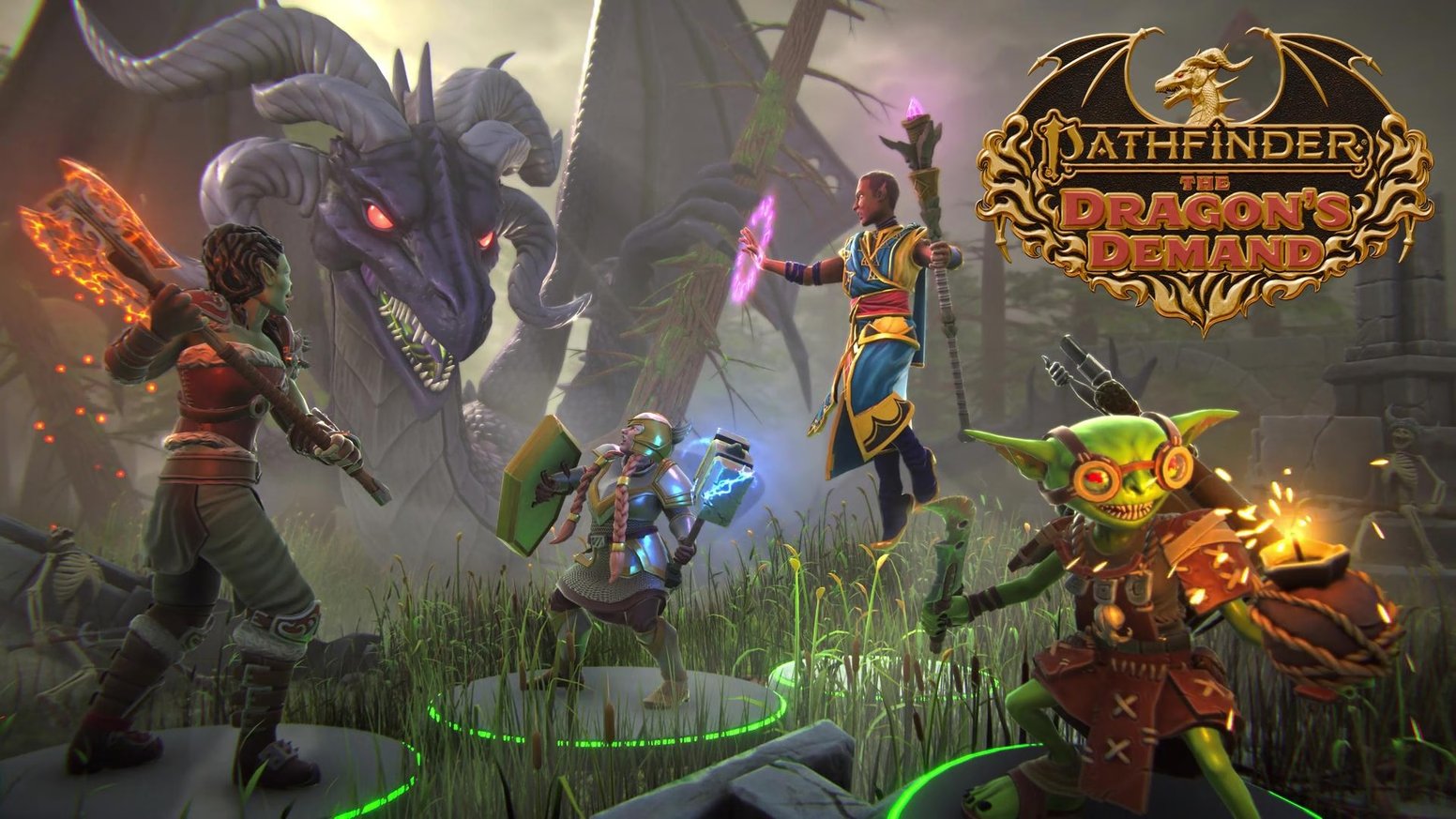Pathfinder: The Dragon’s Demand is an ambitious, single-player, turn-based CRPG inspired by the remastered Pathfinder 2E rules. Developed by Ossian Studios, known for titles like Neverwinter Nights and The Shadow Sun, this game aims to capture the tabletop RPG experience with miniature-based characters and digital dice.
Players can explore a fully realized, three-dimensional world where miniatures can perform feats like climbing, flying, and swimming, giving a truly dynamic tactical combat experience. But let’s learn more about it.

Story Overview
The game is based on the popular Pathfinder module, The Dragon’s Demand, by adventure designer Mike Shel. Set in the world of Golarion, players find themselves in the Verduran Forest, specifically in the dangerous Dragonfen region.
The story revolves around a once-defeated dragon, Aeteperax, who has mysteriously returned to life, threatening the town of Belhaim. Players take on the role of heroes tasked with slaying this revived dragon and uncovering the mysteries of the “Dark Tapestry,” an ominous force tied to the ancient Great Old Ones. These cosmic horrors are said to dwell between the stars, wielding powers capable of warping minds and obliterating worlds.

The story is set in the ancient Verduran Forest of Taldor, where the central location, Belhaim, finds itself at the mercy of Aeteperax. Players can explore an expanded version of the original adventure that features new regions filled with dangerous sidequests, cunning monsters, and gripping personal stories.
Gameplay Features
The gameplay vision is to deliver a classic CRPG experience adapted comprehensively to the Pathfinder 2E rules. Here are some highlights:
- Character Creation: Players can create their characters using seven ancestries, sixteen classes, and over thirty backgrounds, leading to a wide range of possible builds. Customization includes hundreds of different armors and weapons.
- Companions and Exploration: Alongside a cast of vibrant companions, players will explore a richly interactive world filled with diverse NPCs, intricate quests, and multiple narrative paths influenced by player choices.
- Tactical Turn-Based Combat: Pathfinder: The Dragon’s Demand focuses heavily on deep, tactical combat that uses a unique three-dimensional grid system, allowing miniatures to interact fully with the environment—such as climbing walls or swimming underwater.
- Tabletop Elements: It mimics the charm of a digital tabletop game by including fantastical dice effects and miniature-based characters. Players will enjoy skill-based environmental interactions and visually impressive spells and actions.
- Dynamic World: The choices made by players will influence not only the outcome of their journey but also how the game world reacts and evolves, bringing a sense of immersion akin to the best tabletop RPG campaigns.

Team Behind the Game
The game is being developed by Ossian Studios, led by industry veterans such as Alan Miranda, who previously worked on Baldur’s Gate and Neverwinter Nights. The team includes experienced RPG creators like Luke Scull (designer and writer) and Kevin Smith (lead programmer), all driven by a passion for tabletop and digital RPGs.
Visuals and Artistic Style
Pathfinder: The Dragon’s Demand uses a unique visual style inspired by classic tabletop miniatures, with assets created by Philip Lyon and Gabriel Dagostin. Their focus on modeling, sculpting, and creating a digital tabletop look makes the miniatures and environments stand out with visual depth. The use of the Unity Engine allows for advanced shaders, lighting, and environmental effects that bring the world of Golarion to life.
Kickstarter Campaign and Goals
The Kickstarter campaign for Pathfinder: The Dragon’s Demand aims to secure funding to transform the current prototype into a complete game. In addition to offering various digital rewards, the campaign also includes minted physical coins as collector items for backers.
Ossian Studios also plans to evolve the game into a broader platform, potentially adding multiplayer features and creating future games based on the same core systems. Below the Kickstarter trailer and screens.







